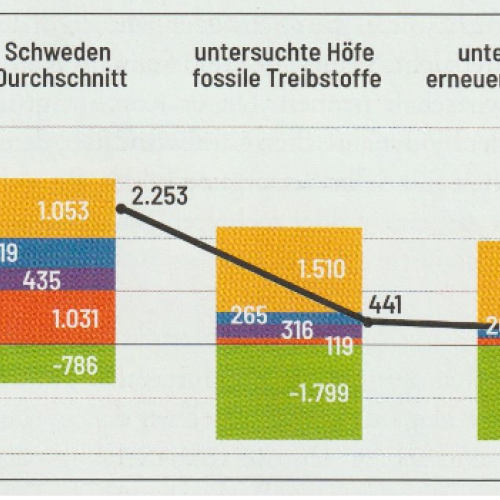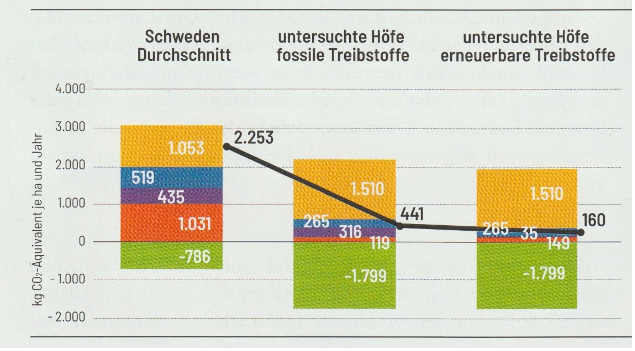
Integrated agriculture can reduce 90% of Greenhouse gas emissions in agriculture.
The biologic-dynamic research institute in Järna, Sweden investigated the environmental footprint including the Greenhouse gas (GHG) emissions of 22 farmers, which are practicing integrated biological agriculture, and compared the results with the footprint of the average Swedish farm. The focus was on reducing eutrophication of the Baltic Sea, which is caused by the lixiviation and run off of minerals (mainly phosphorus and nitrogen) and the GHG balance. The results show that an agriculture based on integration of cattle raising and agriculture, including the production of own fodder, crop rotation and mineral saving treatment of manure, can reduce significantly the environmental impact. This type of agriculture does not only reduce eutrophication but also the GHG emission with approx. 90 %, as the graph below shows (source: Lebendige Erde 2-2022).
The numbers below show the average of all farms investigated. However, one of these farms was able to off-set not only the GHG emissions but this farm was carbon negative with a negative emission of 431 CO2-eq per year!


Share this article:
